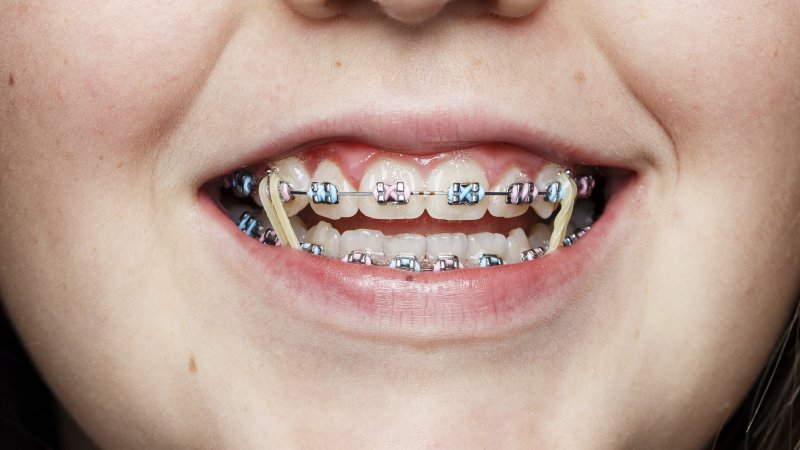
Most people already know that getting braces means wearing brackets and wires, but less well-known are the rubber bands that are often applied at some point during the process. These additions to your orthodontic appliance can take some getting used to, but they do play a very important role in making corrections that couldn’t be accomplished with braces alone. Your orthodontist is here to help you understand why you might need rubber bands on braces in Ripon.
The Basics of Orthodontic Rubber Bands
Braces work by continuously applying pressure to the teeth and jaws, gently moving them into place. This continues to be an effective approach even to this day, but it does come with one downside: on their own, braces can only move the upper and lower teeth and jaws independently of each other. Orthodontic rubber bands are often used to ensure the best possible alignment by making sure the teeth move in specific ways.
Special hooks will be attached to your braces, and then the rubber bands will be placed on them to link the upper and lower arches together. This is typically done a few months after you’ve already started wearing braces. The position of the rubber bands will vary depending on what kind of changes need to be made.
Reasons for Orthodontic Rubber Bands
One of the most common uses of rubber bands is to correct a significantly misaligned jaw, whether it’s an overbite, an underbite, an open bite, or a crossbite. They may also be used to help with specific spacing issues or to reposition specific teeth, such as one that’s leaning backwards a bit too far. Not every orthodontic treatment will require the use of rubber bands, but rest assured that your orthodontist will let you know if they will be included as part of your treatment plan.
Taking Care of Rubber Bands on Braces
You’ll need to change out your rubber bands every so often; your orthodontist will let you know when and give you tips for putting them on and taking them off. You may need to take off your rubber bands when you’re ready to eat or when it’s time to brush. Do not attempt to double up on rubber bands, as this can end up damaging your teeth. It’s not unusual for rubber bands to break while you’re wearing them, so keep extras on hand. And of course, you should be staying away from any sticky, hard, or crunchy foods.
Talk to your orthodontist today if you’re curious about how rubber bands might be used with your braces in Ripon. The more you learn about your orthodontic treatment, the more likely it is to be a success.
About the Author
Dr. Frances Hamman started her dental career in 1991, when she earned her Doctor of Dental Surgery from Creighton University. She went on to earn a degree in orthodontics from Case Western Reserve University in 1993, and since then she’s been helping her patients enjoy straighter smiles with the latest in orthodontic treatments. If you have questions about braces or orthodontic rubber bands, reach out to Dr. Hamman at Sensational Smiles Orthodontics through her website or by calling (920) 748-7130.